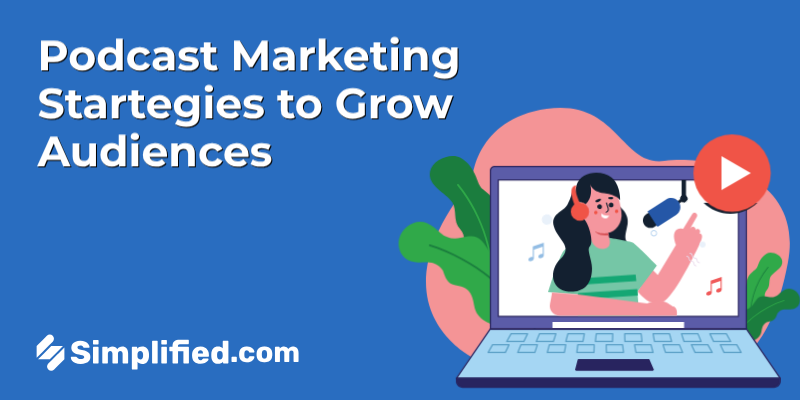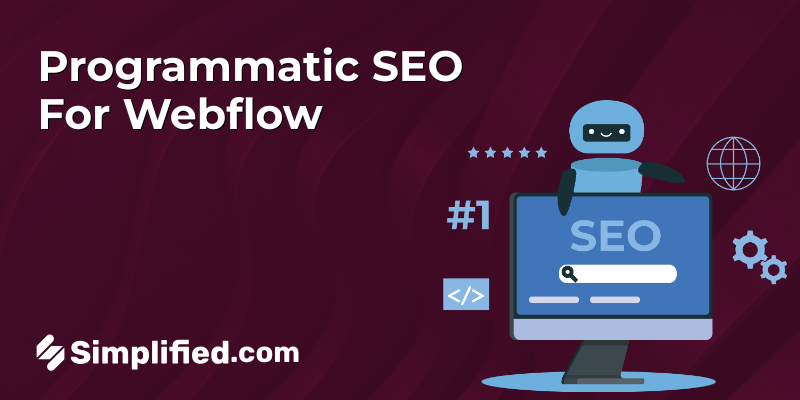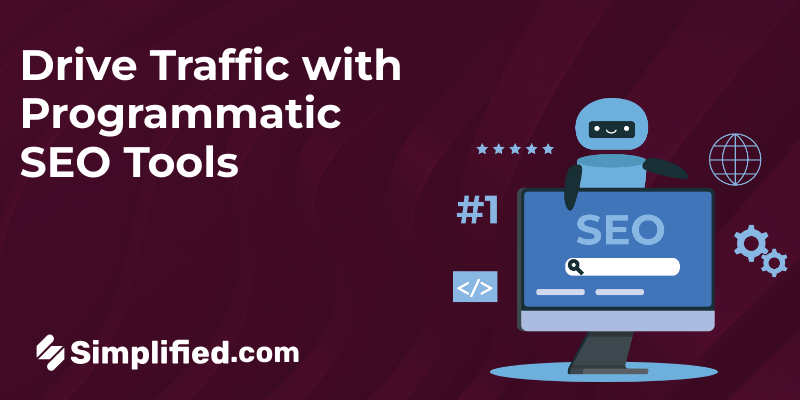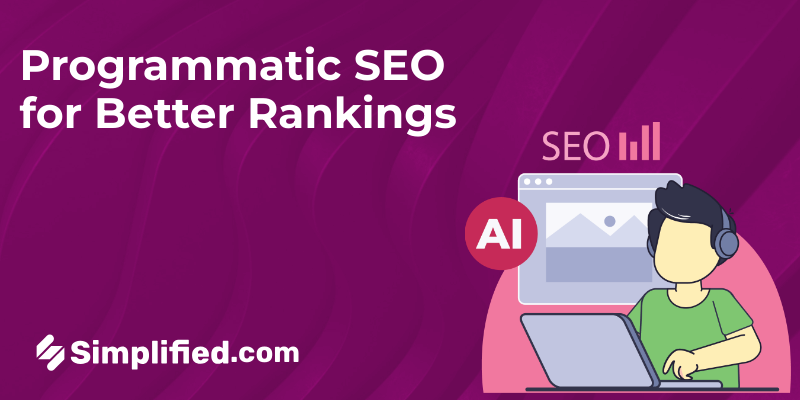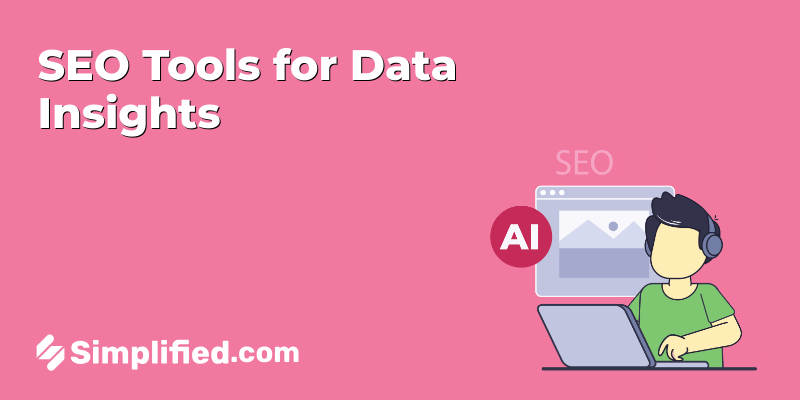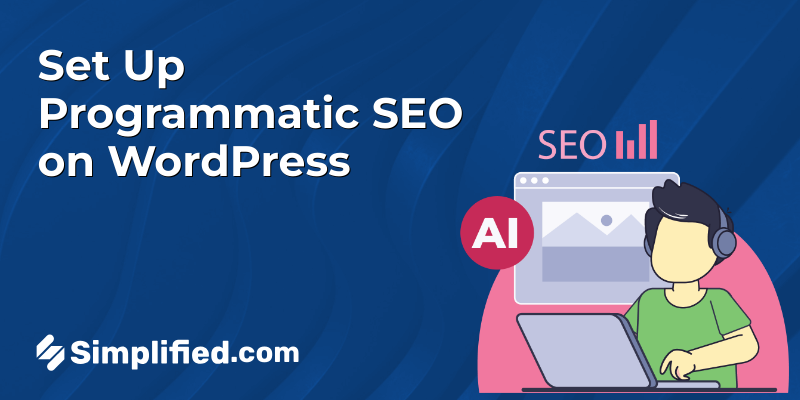
SEO has become an essential element of any successful website strategy, particularly when managing large-scale sites with numerous pages. In such cases, achieving effective SEO at scale can be a challenge. This is where programmatic SEO comes into play, offering an automated solution to optimize multiple pages quickly and effectively. In this guide, we will walk you through the process of setting up programmatic SEO on WordPress, providing simple tips to enhance your website’s performance without getting bogged down in manual SEO tasks.
What is Programmatic SEO?
Before diving into the setup, let’s first clarify what is programmatic SEO. Simply put, programmatic SEO involves using automation to optimize multiple web pages or entire websites. Instead of manually adjusting SEO elements for each individual page, programmatic SEO allows you to apply SEO tactics to large groups of pages, saving time and ensuring consistency.
Programmatic SEO typically involves:
- Automating the generation of SEO-friendly content, titles, and meta descriptions.
- Structuring data to help search engines better understand your content.
- Using algorithms to scale SEO efforts across hundreds or thousands of pages, such as creating optimized URLs, improving internal linking, and more.
For WordPress users, this can be incredibly beneficial. With programmatic SEO WordPress, websites can maintain efficiency, ensuring each page is optimized for fast SEO results, which helps achieve better rankings on search engines without hpaving to spend hours tweaking individual pages.
Why Choose Programmatic SEO for WordPress?
WordPress is an incredibly flexible platform that offers a wide array of plugins and tools that make it an ideal option for programmatic SEO. This capability is especially useful for websites with extensive content that requires frequent optimization. By using programmatic SEO WordPress tools, you can apply SEO tactics across your website in a fraction of the time it would take to manually optimize each page.
Programmatic SEO in WordPress allows for:
- Faster SEO updates across large websites.
- Automation of repetitive tasks, allowing you to focus on content strategy.
- Scalability, which is key for websites looking to grow without sacrificing SEO quality.
Bonus: Programmatic SEO Strategies For Webflow: A Complete Guide
How to Set Up Programmatic SEO on WordPress: Step-by-Step Guide
Setting up programmatic SEO on WordPress doesn’t have to be complicated. Here’s a simple guide to get you started:

Step 1: Install Essential Plugins for Programmatic SEO
To get started with programmatic SEO WordPress, you’ll need to install several essential plugins. These plugins help automate key aspects of SEO across your website. Here are a few plugins you should consider:
- Yoast SEO or Rank Math: These plugins allow you to manage meta tags, generate sitemaps, and implement structured data across your site.
- Schema Pro: This plugin enables you to add schema markup, which helps search engines understand the content and context of your pages.
- WP Rocket or W3 Total Cache: These tools are essential for improving website speed, an important aspect of SEO.
Each plugin helps ease different SEO tasks, from creating SEO-friendly meta tags to managing structured data, allowing you to implement programmatic SEO with minimal effort.
Bonus: Top Programmatic SEO Tools to Drive Website Traffic
Step 2: Use Structured Data and Schema Markup
Structured data and schema markup are essential for programmatic SEO, as they help search engines understand the context and purpose of your content. This is especially important for large websites with various types of content.
With the help of plugins like Schema Pro, you can automate the implementation of schema markup on your WordPress pages. By adding structured data to your site, you make it easier for search engines to crawl your content, which can lead to better rankings and increased visibility in search results.
Step 3: Automate Title and Meta Description Optimization
SEO-friendly titles and meta descriptions are critical for improving click-through rates from search engines. Programmatic SEO allows you to automate the process of generating these elements, saving you time while ensuring that each page is optimized.
For example, using Yoast SEO or Rank Math, you can set default templates for titles and descriptions based on keywords or content types. These tools will automatically adjust each title and description to fit the page, ensuring they’re optimized for fast SEO.
Bonus: AI for SEO: A Marketer’s Guide to Improved SEO Writing
Step 4: Optimize URL Structure
URL optimization is an often-overlooked aspect of SEO, but it’s crucial for ensuring your pages rank well in search results. With programmatic SEO WordPress, you can automatically optimize URL structures for each new page created.
Make sure to implement a consistent and SEO-friendly URL structure. For example, use short, descriptive URLs that include your target keywords. WordPress plugins like Yoast SEO or Rank Math can automatically generate clean and SEO-friendly URLs for your pages, which improves site navigation and ensures proper keyword targeting.
Step 5: Implement Internal Linking Automation
Internal linking is one of the best ways to improve your website’s SEO, as it helps search engines crawl your site more effectively and establishes the relationship between your content. With programmatic SEO, you can automate internal linking across your website.
For instance, plugins like Link Whisper can automatically suggest internal links based on your content, or you can set rules to link certain pages together. This helps build a strong internal linking structure that improves your site’s SEO at scale.
Step 6: Scale Content Creation with Programmatic SEO
One of the major advantages of programmatic SEO is the ability to scale content creation. Instead of writing individual blog posts for every topic, you can use automation tools to generate content at scale.
For example, you can use templates to create pages that target specific keywords. These templates can automatically pull in relevant data, making content creation faster and more efficient. This method ensures that all content is optimized for programmatic SEO and saves time by reducing the need for manual input.
Bonus: How AI SEO Content Generators Improve Your Content Strategy
Step 7: Monitor Performance and Iterate
SEO is an ongoing process, and it’s essential to monitor the performance of your programmatic SEO efforts. Use tools like Google Analytics or SEMrush to track your website’s traffic, keyword rankings, and overall performance.
Regularly review your SEO strategy to identify areas for improvement. Make adjustments to your automated processes as needed, whether it’s tweaking your URL structure, updating content, or adjusting your schema markup. Iterating on your strategy ensures you continue to see fast SEO results and maintain a competitive edge.
Programmatic SEO Best Practices for WordPress
To get the best results from programmatic SEO, keep these best practices in mind:
- Focus on Page Speed: Use caching and image optimization plugins to improve site load times, which is an important ranking factor.
- Optimize for Mobile: Ensure your website is mobile-friendly, as mobile traffic is crucial for SEO.
- Regular SEO Audits: Run regular audits to spot any technical issues or SEO gaps and address them promptly.
- Use Keyword Variations: Don’t rely on a single keyword. Use variations and related terms to target a broader audience.
- Refresh Old Content: Don’t forget to update older content. Use programmatic SEO to add new keywords or improve existing content.
Bonus: Top SEO Analytics Tools for Digital Marketers
Common Mistakes to Avoid in Programmatic SEO
While programmatic SEO is a powerful tool, it’s important to avoid a few common mistakes:
- Over-Automation: Relying too heavily on automation can lead to poor-quality content or missed opportunities. Always review automated content and SEO elements.
- Ignoring Analytics: Don’t skip performance tracking. Regular monitoring helps you identify and correct mistakes before they affect rankings.
- Skipping Human Review: Even with automation, human oversight is necessary to ensure that the content is relevant and useful to your audience.
How Simplified Eases Programmatic SEO for WordPress

Simplified can be useful in programmatic SEO for WordPress, especially in tasks like content creation, optimization, and automation. Programmatic SEO often involves generating large amounts of content, optimizing metadata, and ensuring consistency across multiple pages. Simplified, with its AI-based tools, can help streamline these processes by:
- Content Generation: It can generate AI content at scale, saving time in creating optimized copy for pages, posts, and product descriptions.
- Metadata Optimization: Simplified can assist in writing compelling meta descriptions, titles, and alt text for images, all of which contribute to improved SEO performance.
- Content Suggestions: It can offer keyword suggestions and help create keyword-rich content to target specific search queries, enhancing the site’s search visibility.
- Automation: For tasks such as meta tag updates or content scheduling, Simplified can integrate with WordPress and reduce manual work, ensuring SEO consistency.
While Simplified can handle content creation and some SEO tasks, it works best when combined with other SEO plugins or tools designed specifically for WordPress, such as Yoast or Rank Math, to maximize the impact of programmatic SEO strategies.
Bonus: Elevate Your Blogging Website With Excellent Technical SEO: A Pro’s Guide
Conclusion
Setting up programmatic SEO on WordPress is a smart way to handle SEO at scale, allowing you to automate key tasks like content creation, internal linking, and schema markup. By following the steps outlined above, you can improve your website’s SEO and see faster, more efficient results. Whether you’re looking to optimize one page or thousands, programmatic SEO is a powerful tool for enhancing your WordPress site’s performance.
By implementing fast SEO strategies and using the right plugins, you can maximize your SEO efforts and keep your website ahead of the competition. Start today and reap the benefits of programmatic SEO on WordPress!


